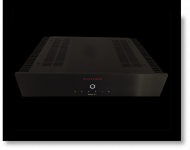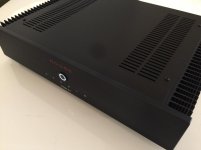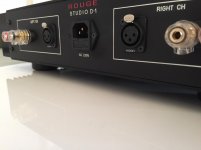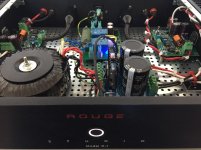You can use cheap head magnifiers, low magnification stereo microscopes (less than 10x is probably the best) or usb microscopes.
We used stereo dissecting microscopes with 4x - 10x magnification where I used to work. Those were wonderful for soldering.
8) Use leaded solder paste, it requires less heating!
Yep.
Tom
From the Department of Good News: CETA, the trade agreement between Canada and the European Union, went into force last week (Sept. 21st). Best I can figure, this is great news for my European builders as this means no more customs fees. I would imagine that you still pay VAT (where applicable). Still. The savings should be substantial in many cases.
You can see the details of the agreement here: CETA: A progressive trade agreement for a strong middle class
Just thought I'd let you know.
Tom
You can see the details of the agreement here: CETA: A progressive trade agreement for a strong middle class
Just thought I'd let you know.
Tom
Sorry to be the bearer of sad news. TI has once again decided to discontinue the LME49710. This time in all package options. You can see the official PCN here: https://media.digikey.com/pdf/PCNs/Texas Instruments/PCN20170721000.pdf This is rather unfortunate for the Modulus-86 as the LME49710 is the only opamp suitable for that project. The suggested replacement, the OPA1611, is SMD only and will require the redesign of the compensation circuit(s) in the Modulus-86.
The Modulus-286 and HP-1 are OK as the LME49720 gets to live on.
There's no reason to panic just yet. The last date to order the LME49710 from TI is sometime next summer, so I suspect Digikey/Mouser/etc. will have stock for some time to come. I will keep supporting the Modulus-86, even if it means I have to buy a couple of tubes of LME49710s and sell the ICs with the boards. That said, those of you looking for an all-leaded (i.e. no surface mounted parts) Modulus amplifier should probably consider ordering your boards relatively soon here.
Tom
Doesn't this also affect your THAT driver boards since they also use the LME49710s?
Doesn't this also affect your THAT driver boards since they also use the LME49710s?
Yep. The opamp in that spot is a lot easier to replace, though. One could drop in an OPA1611 with an adapter and be happy as a clam. That's not the case with the MOD86.
Tom
A mighty fine commercial MOD86 implementation
Folks,
I received this from Federico, the owner of Rouge Audio Design in Italy. He built an amp for a customer using my Modulus-86 and Power-86 boards and did a very nice job. I thought I'd share.
Tom
Folks,
I received this from Federico, the owner of Rouge Audio Design in Italy. He built an amp for a customer using my Modulus-86 and Power-86 boards and did a very nice job. I thought I'd share.
Tom
Attachments
Folks,
I received this from Federico, the owner of Rouge Audio Design in Italy. He built an amp for a customer using my Modulus-86 and Power-86 boards and did a very nice job. I thought I'd share.
Tom
Tom,
What is that board at rear center? Looks like relays or switchers with a load resistor?
Yep. The opamp in that spot is a lot easier to replace, though. One could drop in an OPA1611 with an adapter and be happy as a clam. That's not the case with the MOD86.
Tom
Tom
What do you think about 992Enh-Ticha Discrete Operational Amplifier DIP8 from Sonic Imagery Labs as a LME49710 replacement in your Modulus-86?
What kind of changes one would expect?
Regards,
I would expect the Mod to stop working as expected. It's a composite and the performance of the front end op-amp is critical to that. Glomming in something else is almost guaranteed to cause issues. Also why would you even consider that?
I would expect the Mod to stop working as expected. It's a composite and the performance of the front end op-amp is critical to that. Glomming in something else is almost guaranteed to cause issues. Also why would you even consider that?
Well there are some discrete opamp that are said to be better than ICs. Sonic Imaginery Labs 992Enh is said to be one of them. The are also some other like Burson or sparkos labs. So I thought replacing LME49710 with it on Modulus 86 would bring this amp to new level.
'said to be' is the part you need to bear in mind. Now Tom can put this far more eloquently than I can but the Mod-86 is a composite amplifier, so the LM3886 is inside the feedback loop of the LME49710. In simple terms you are making an LM3886 with the performance of an LME49710. This is not electronics 101 and requires quite a bit of experience to get to work properly. The circuit is optimised for the devices chosen and you cannot change the front end without re-optimising the system.
Mod-86 out the box has some of the best measured performance available so there is no 'new level' to take it to. In normal listening the brownian motion in the listening room is at a higher level than the distortion from the amplifier!
Mod-86 out the box has some of the best measured performance available so there is no 'new level' to take it to. In normal listening the brownian motion in the listening room is at a higher level than the distortion from the amplifier!
Well the problem with the LME49710 is that TI has end-of-lifed the through hole version of the chip. So at some point the stock will be used up and the Mod-86 may cease to be a product or an alternate opamp could be used.
yes, and if Tom decides on another op-amp he will re-optimise for that as a new revision. But glom your own is unlikely to become an option, and £70 a pop discrete op-amps are hardly a VFM choice!
By the time lme49710 will be hard to get Tom will already have a new design , he will not sell his boards knowing that lme49710 is discontinued. How do I know? He stoped selling the parallel86 when lm4780 was discontinued.
What is that board at rear center? Looks like relays or switchers with a load resistor?
It's a soft-start board for powering up the mains transformer gently. I generally don't use them, but some do. I'll eventually make my own soft start board.
What do you think about 992Enh-Ticha Discrete Operational Amplifier DIP8 from Sonic Imagery Labs as a LME49710 replacement in your Modulus-86?
I have yet to find a "discrete opamp" that provides better performance than an IC. The Sonic Labs 992Enh-Ticha is certainly a half-decent one, assuming it meets its specs. The fact that one of their graphs shows the open-loop gain (AVOL) up to 50 MHz and has an Audio Precision logo, has me suspicious as AP, to my knowledge, does not offer any equipment that goes that high in frequency. I haven't looked through their entire product portfolio so I could be wrong, but I don't think so. I would also like to see the phase response. From a glance, the AVOL graph looks great but note the closed loop response on page 8. It shows significant peaking in the frequency response which doesn't jive with the straight-a-an-arrow -20 dB/dec slope in the AVOL graph. Also, the gain-bandwidth product is specified within the narrow frequency range of 10 kHz to 100 kHz. Why?! Nothing in the AVOL graph indicates it should be different there, which leads me to question if that graph is even real.
Also the THD+N is over an order of magnitude worse than the LME49710, OPA161x, OPA164x, etc.
450 uV offset is nice for a discrete circuit. 100 nA offset current - not exciting. 1 uA of input bias current - not exciting.
The 992Enh-Ticha features very nice performance for a discrete circuit, assuming it meets its specs. Still doesn't perform better than a modern IC. Sorry to burst your bubble.
Many of the other "discrete opamps" have -40 dB/dec slopes and are internally compensated to have a -20 dB slope around unity gain. Hence they are only unity gain stable. They may make decent buffers, but be careful in circuits with gain, such as RIAA amps, as they will oscillate given the chance.
What kind of changes one would expect?
If you were to use the 992Enh-Ticha rather than the LME49710, I would expect the Modulus-86 to break into rail-to-rail oscillations at a few MHz and likely blow your speakers.
Tom
Last edited:
By the time lme49710 will be hard to get Tom will already have a new design , he will not sell his boards knowing that lme49710 is discontinued. How do I know? He stoped selling the parallel86 when lm4780 was discontinued.
Bingo!
I bought 100 LME49710NA a few weeks ago. They're still sitting in their tubes from TI. I'll start selling them with the boards when Mouser starts to get low in supply.
Trust me. I will NOT leave you hanging. If you buy my stuff, you will be able to get parts – at least today. If you buy the boards and sit on them for years before you start to build, you may be out of luck.
Right now Mouser has 2200 of the LME49710 in stock, so stock is not an issue right now. I suspect that sometime in the spring this will change.
Tom
It's a soft-start board for powering up the mains transformer gently. I generally don't use them, but some do. I'll eventually make my own soft start board.
I have yet to find a "discrete opamp" that provides better performance than an IC. The Sonic Labs 992Enh-Ticha is certainly a half-decent one, assuming it meets its specs. The fact that one of their graphs shows the open-loop gain (AVOL) up to 50 MHz and has an Audio Precision logo, has me suspicious as AP, to my knowledge, does not offer any equipment that goes that high in frequency. I haven't looked through their entire product portfolio so I could be wrong, but I don't think so. I would also like to see the phase response. From a glance, the AVOL graph looks great but note the closed loop response on page 8. It shows significant peaking in the frequency response which doesn't jive with the straight-a-an-arrow -20 dB/dec slope in the AVOL graph. Also, the gain-bandwidth product is specified within the narrow frequency range of 10 kHz to 100 kHz. Why?! Nothing in the AVOL graph indicates it should be different there, which leads me to question if that graph is even real.
Also the THD+N is over an order of magnitude worse than the LME49710, OPA161x, OPA164x, etc.
450 uV offset is nice for a discrete circuit. 100 nA offset current - not exciting. 1 uA of input bias current - not exciting.
The 992Enh-Ticha features very nice performance for a discrete circuit, assuming it meets its specs. Still doesn't perform better than a modern IC. Sorry to burst your bubble.
Many of the other "discrete opamps" have -40 dB/dec slopes and are internally compensated to have a -20 dB slope around unity gain. Hence they are only unity gain stable. They may make decent buffers, but be careful in circuits with gain, such as RIAA amps, as they will oscillate given the chance.
If you were to use the 992Enh-Ticha rather than the LME49710, I would expect the Modulus-86 to break into rail-to-rail oscillations at a few MHz and likely blow your speakers.
Tom
Tom,
Thank for detailed explanation, bursting my bubble and saving my speakers again 🙂
I already have modulus-86, which is the best I amp I have ever had so far. I just was curious whether I could go any further with that ...
I already have modulus-86, which is the best I amp I have ever had so far. I just was curious whether I could go any further with that ...
The Modulus-286 is marginally better. Not meaningfully better, but it does have a slightly lower noise floor, thus better THD+N. This due to the redesigned front-end. The THAT1200 limits the noise performance of the MOD86.
Tom
Tom
My Parallel 86 amps are bridged. Please advise of the component changes I'd need to make to convert them to 26db gain. Thanks.
My Parallel 86 amps are bridged. Please advise of the component changes I'd need to make to convert them to 26db gain. Thanks.
Clarification is in order. Modulus 286 or Parallel 86? And...since so many copycats abound, might I suggest emailing Tom directly? The answer is on page 10 of the Modulus 286 instructional manual.
Best,
Anand.
Best,
Anand.
- Home
- Amplifiers
- Chip Amps
- Modulus-86 build thread



